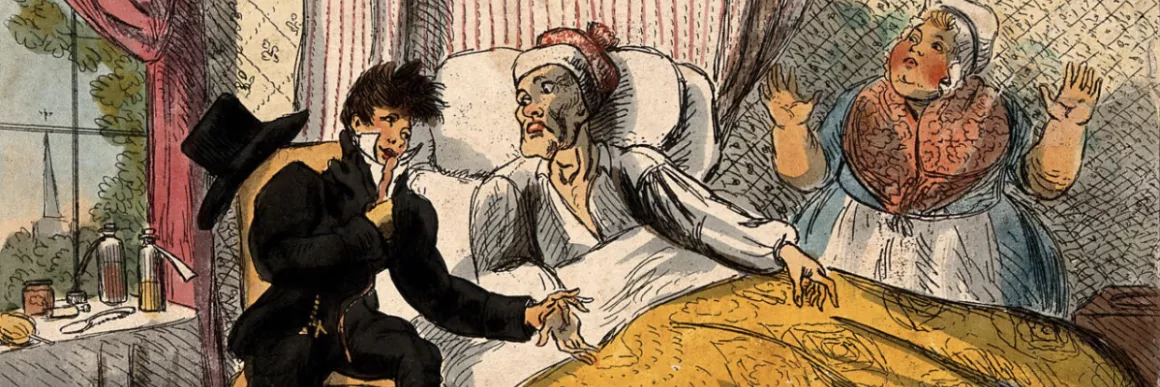The years between 1750 and 1850 were pivotal for shaping contemporary ideas about wellbeing, health, illness, and disability. Romantic thinkers saw wellbeing as relative, embodied, and inextricable from social and political circumstances. This volume shows that the Romantic era can offer resources for thinking about the particular intersection between wellbeing and pedagogy, recognizing that all learning is also embodied and embedded in a network of social, cultural, and political contexts.
Abstract
In the global COVID-19 pandemic, our lives have been profoundly affected by issues of contagion, health, mortality, and the deep systemic inequalities that shape embodied experience. Those of us in teaching professions have additionally had to confront the pandemic’s complex effects on the relationship between wellbeing and pedagogy. We may look to the past for insight into the present: how did we get here, and how do we move forward?
Abstract
This essay makes a case for the value of emphasizing the centrality of disability to not only the study of Romanticism but also literary studies more broadly. In a retrospective account of a past undergraduate seminar I taught during my graduate studies, "Disability Narratives," I outline different ways of integrating disability into pedagogy both at the level of classroom practices and at the level of content.
Abstract
In this essay I describe an extended unit and major assignment centered on Dorothy Wordsworth’s published and unpublished journals in an upper-level English course I have designed, titled “Romanticism and Feminist Disability Studies.” The course will demonstrate, among other things, how disability studies-based interventions reveal the ways in which notions of normal and able bodies shape not only our ideas about health and wellness but also the Romantic canon and, in turn, how the traditional Romantic canon contributes to normative ideas about health and wellness.
Abstract
This essay begins from the premise that teaching is a practice of care. At the same time, engaging ethically with our students requires us to be gentle, even remote, and to accept all we cannot know of them. I suggest how the work of embodied reading and experimental essay-writing can allow us to care indirectly for the bodyminds of the learners whose lives intersect with our own. I describe, in particular, how the act of walking can invite students to read and respond to British Romantic writing--itself often preoccupied by walking--and their own lives in surprising ways.
Abstract
My essay begins with the premise that any consideration of “wellness” must contend with the fraught nature of our “bodiliness”: what it means to “have,” or “inhabit,” or otherwise experience the world in, as, or through our bodies, while always wrestling with the notion that others are doing the same.
Abstract
This essay explores connections between improvisational accessibility and Romanticism to discuss how instructors can help students to achieve well-being in their classrooms. It shows how improvisation is at the core of Romantic thought, including in the poetics of William Wordsworth, and how it informs contemporary disability activism. An improvisational mindset challenges the tendency to look to institutional forms of legitimacy, such as medical notes or paperwork from Disability Services, and reframes access as an ongoing, interactive process.
"When the dreadful streel was plunged into the breast": Teaching Romantic Surgeons, Anatomists, and Bodysnatchers to Students in Health Sciences
Rebecca E. MaattaAbstract
At Duquesne University, I regularly teach a 300-level writing-intensive “Healthcare and Literature” class populated almost exclusively by sophomores and juniors enrolled in a Doctorate in Physical Therapy (DPT) program, which awards them a bachelor’s degree after 4 years and a doctorate after 6. My primary goal is for these students to articulate practical, professional takeaways from studying literary representations of illness and medical intervention.
Frankenstein's Creature in the Classroom: Disrupting Disability, Race, and Medicine
Emily Stanback, Ashley HobsonAbstract
In this essay, we share Martha Stoddard Holmes’s sense of “how much Frankenstein has to say about disability” and share her puzzlement about why “we rarely see it on those terms” (375). Stoddard Holmes incisively reads Frankenstein “‘with’ disability”—following several scholars who have read the Creature as a metaphor for disability, or as defined by an unnamed deformity. We wish to go further.
Abstract
In what follows, I describe the planning, development, and execution of the assignment before turning to a consideration of how community-based learning (CBL) initiatives, such as this one, activate the potential of three growing, but currently separate, sympathetic discourses within Romantic scholarship: the public humanities, the discourse of care, and the prison narrative.
About
Romanticism, Teaching, Wellbeing: A Pedagogy Volume © 2024 by Ben Pladek and Emily Stanback is licensed under CC BY-NC-ND 4.0

